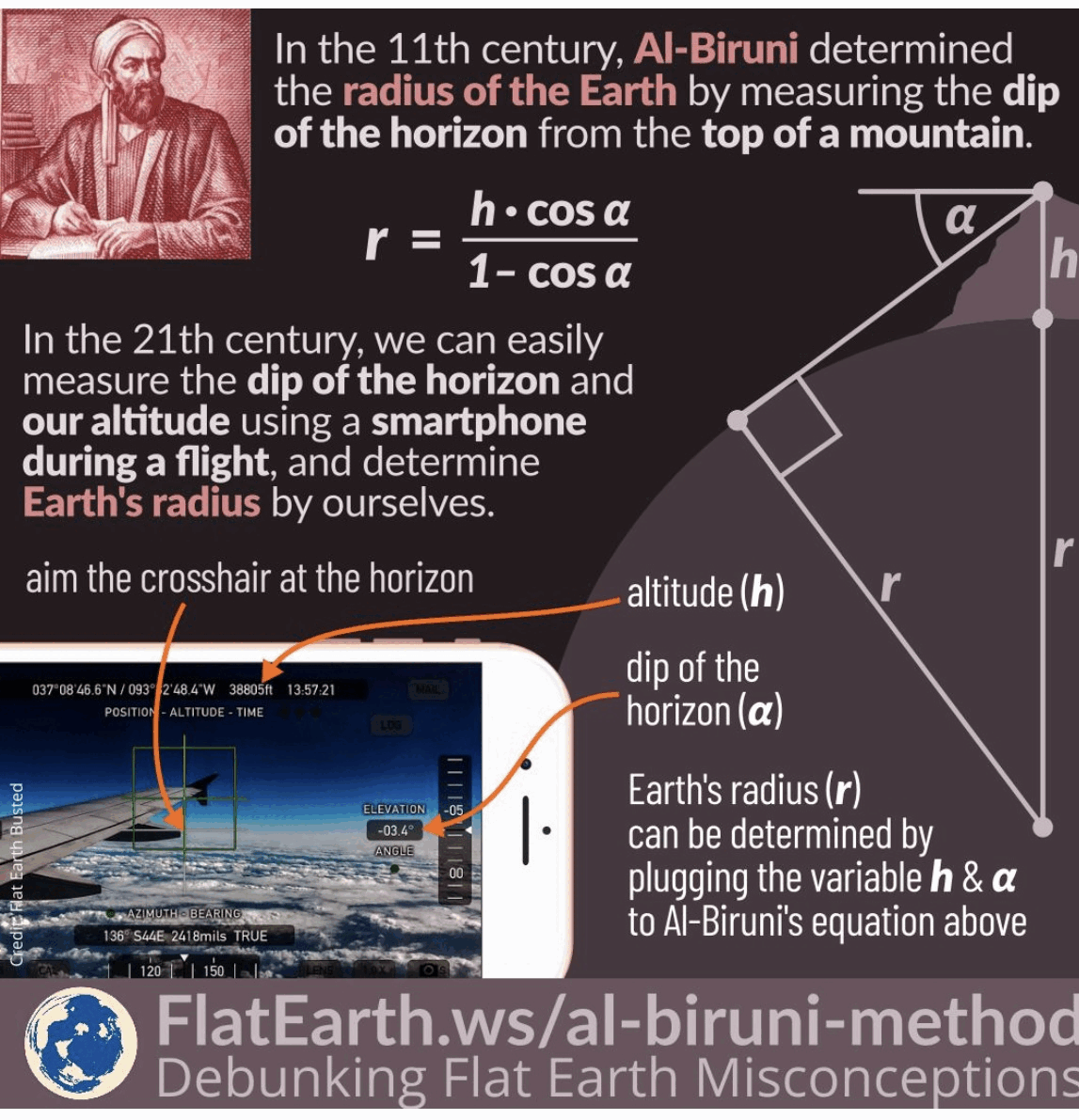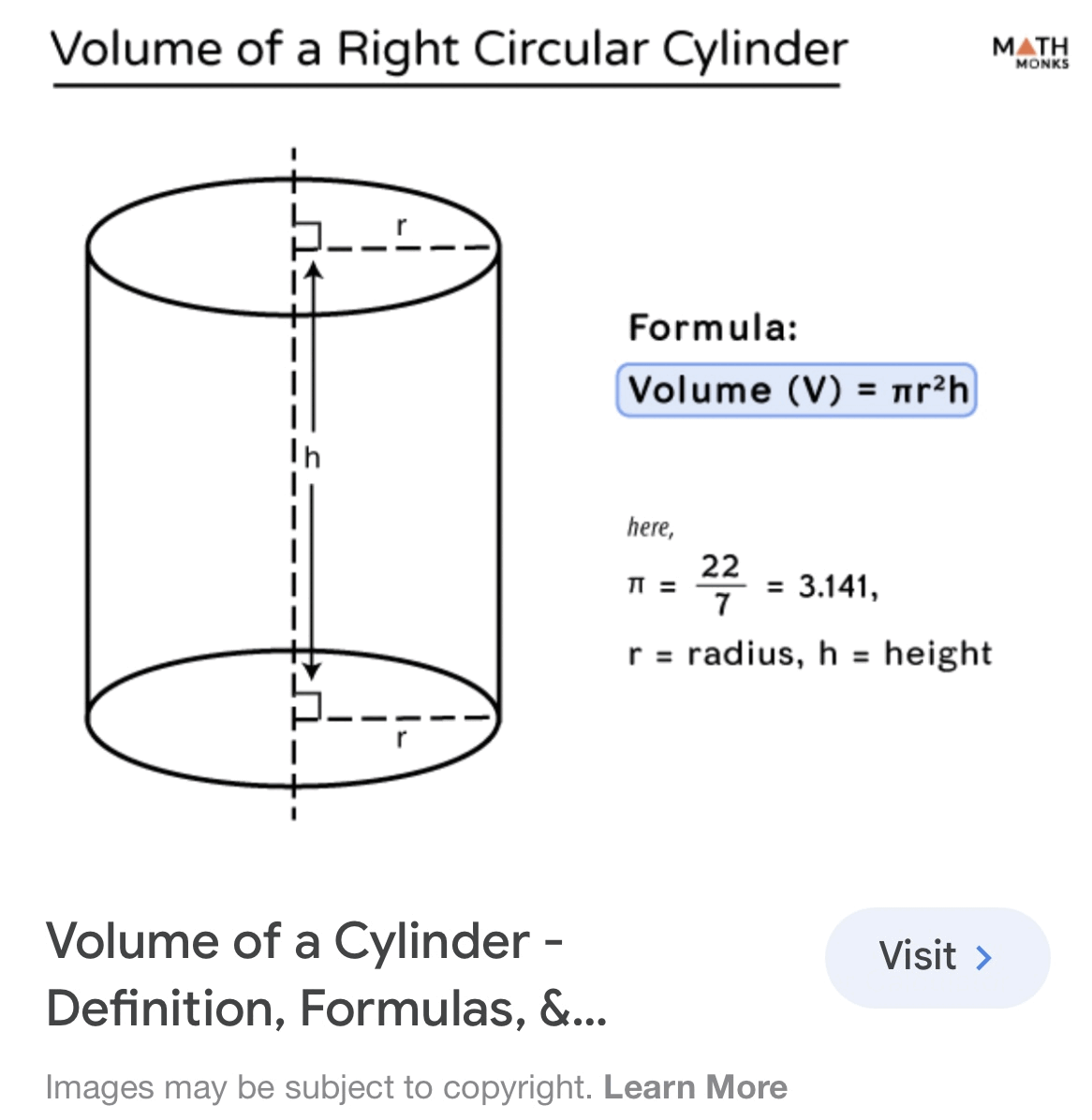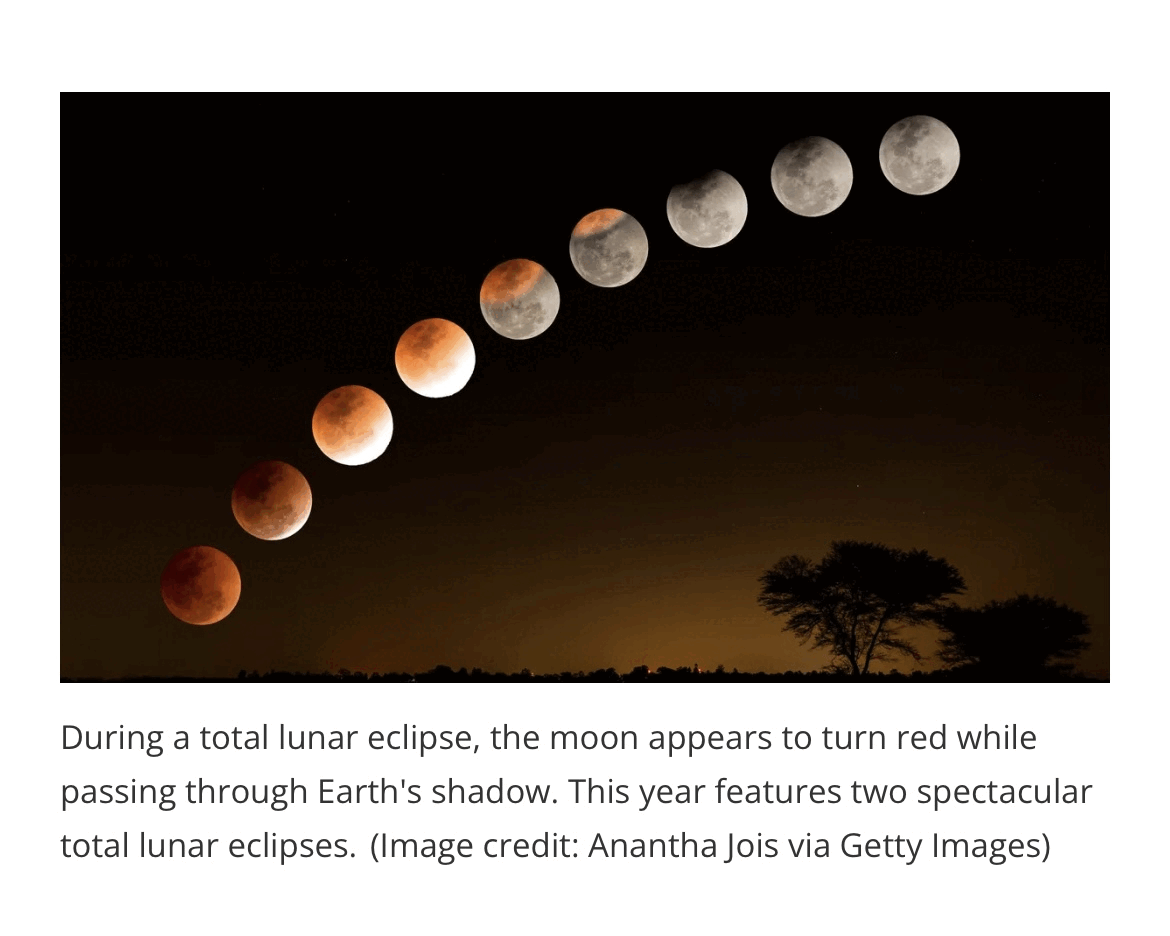It looks like you're using an Ad Blocker.
Please white-list or disable AboveTopSecret.com in your ad-blocking tool.
Thank you.
Some features of ATS will be disabled while you continue to use an ad-blocker.
share:
originally posted by: TheLieWeLive
The radius of what?
The earth from various locations that this can be done.

Like from an aircraft or mountain top.
Or the use of GPS and the Rainy lake experiment.
originally posted by: TheLieWeLive
A sphere?
Yes the rough radius of a spherical earth that is a little more in radius at the equator if I remember right.
originally posted by: TheLieWeLive
A cylinder?
Based on what evidence. While in the navy and my travels, seen no proof.
originally posted by: TheLieWeLive
A cone?
See above.
edit on 10-12-2023 by Lazy88 because: (no reason given)
originally posted by: andy06shake
a reply to: TheLieWeLive
A sphere.
The size of the Earth can be calculated using various methods.
The most common way is to measure its diameter.
And since the Earth is roughly spherical in shape, its size is often expressed in terms of its diameter or radius.
A Cylinder has a diameter and radius as does a cone in varying degrees. I'm just saying that a sphere isn't the only shape with a radius or diameter that could give the same measurement depending where they are taken.
Of course I'm not saying any of this for certain, how could I? I like the mental workout while others get worked up about it. I don't care if I'm not taken serious about this subject. I'm not trying to be, again I like the hypothesis the original poster made and added some what if to it.
originally posted by: TheLieWeLive
Of course I'm not saying any of this for certain, how could I?
Well. You should have a theory made by some observation and based on evidence.
What would make you think the earth is a cylinder or a cone, and calling the earth roughly spherical is wrong.
And what evidence do you have the earth isn’t spherical, and is either a cone? Or a cylinder?
edit on 10-12-2023 by Lazy88 because: (no reason given)
a reply to: Lazy88
The proof that it is a sphere is the same proof it could be a cylinder, or cone depending on where you measured the cone at. How did you, while in the Navy and travels, see proof of a spherical Earth, and not a cylinder or cone?
I'm not saying it's a cylinder or cone. Just wondering how you know it is not.
The proof that it is a sphere is the same proof it could be a cylinder, or cone depending on where you measured the cone at. How did you, while in the Navy and travels, see proof of a spherical Earth, and not a cylinder or cone?
I'm not saying it's a cylinder or cone. Just wondering how you know it is not.
originally posted by: TheLieWeLive
a reply to: Lazy88
The proof that it is a sphere is the same proof it could be a cylinder, or cone depending on where you measured the cone at. How did you, while in the Navy and travels, see proof of a spherical Earth, and not a cylinder or cone?
I'm not saying it's a cylinder or cone. Just wondering how you know it is not.
And again…
The earth from various locations that this can be done.

Where does the above show the earth has flat sides like a cylinder, and not spherical.
Where does the above show the earth has a flat end, and the a cone the greatly changes radius with little change in distance from what would be the base.
And sunsets and sun rises with be radically different for different areas.
Boats would radically have different rates of disappearing over the horizon, or not at all for flat areas of the cylinder or cone.
The earth’s shadow against the moon during a lunar eclipse would be radically different.
a reply to: TheLieWeLive
'Those were funny times.
Pythagoras and Galileo would agree."
No, they would be laughing, too.
'Those were funny times.
Pythagoras and Galileo would agree."
No, they would be laughing, too.
originally posted by: Lazy88
a reply to: TheLieWeLive
Shadow of earth on moon during lunar eclipse
www.space.com...
Would that be different from a cylinder shape? Torus if you must.
originally posted by: Oldcarpy2
a reply to: TheLieWeLive
'Those were funny times.
Pythagoras and Galileo would agree."
No, they would be laughing, too.
Go easy on yourself, I bet you're not even that funny looking.
Is the OP's idea like parallel realities but instead of being in a different dimension all realities are in the same dimension and Earth is actually
as big as the Universe?
Kinda trippy idea if that's what the OP is supposed to mean.
Kinda trippy idea if that's what the OP is supposed to mean.
originally posted by: TheLieWeLive
a reply to: Lazy88
A cylinder has to have flat sides?
Yes. If you go by definition and defining formulas.

edit on 10-12-2023 by Lazy88 because: (no reason given)
a reply to: Lazy88
I guess you missed where I clarified Torus doesn't have to have flat ends and it is a cylinder shape also.
Oh but it doesn't have to be a torus shape either. My point, the entire time, was there are more than one shape to have a radius or diameter that could give the same results.
I guess you missed where I clarified Torus doesn't have to have flat ends and it is a cylinder shape also.
Oh but it doesn't have to be a torus shape either. My point, the entire time, was there are more than one shape to have a radius or diameter that could give the same results.
edit on 10-12-2023 by TheLieWeLive because: (no reason given)
originally posted by: TheLieWeLive
originally posted by: Lazy88
a reply to: TheLieWeLive
Shadow of earth on moon during lunar eclipse
www.space.com...
Would that be different from a cylinder shape? Torus if you must.
Take ball, a cylinder, and project thier shadows on the wall. Take some photos and let us know.
But all indications is a spherical earth, not a cylinder with flat sides or long straight side lengths, and not a cone with a flat side and cone.
edit on 10-12-2023 by Lazy88 because: (no reason given)
a reply to: TheLieWeLive
From sunsets to the horizon, and the way objects disappear over the horizon, why would I think the earth is a Torus.
From sunsets to the horizon, and the way objects disappear over the horizon, why would I think the earth is a Torus.
a reply to: TheLieWeLive
Cool.
I'm just saying that the most common way to determine the size/shape is to measure our Earth's diameter.
But there are other ways that science and technology can be used to determine the shape of the planet.
Take for instance geodetic surveys, satellite observations, gravity measurements, astronomical observations, and of course the global positioning system(GPS) we have in place.
Where the above methods, used individually, or in combination, contribute to our understanding of the Earth's shape/size.
It makes great science fiction flat/infinite Earth, ile say that.
But the reality is we know the size and shape of the planet on which we exist.
Which is an oblate spheroid, approximately 7,918 miles in diameter, and with a circumference around the equator of roughly 24,901 miles.
Cool.
I'm just saying that the most common way to determine the size/shape is to measure our Earth's diameter.
But there are other ways that science and technology can be used to determine the shape of the planet.
Take for instance geodetic surveys, satellite observations, gravity measurements, astronomical observations, and of course the global positioning system(GPS) we have in place.
Where the above methods, used individually, or in combination, contribute to our understanding of the Earth's shape/size.
It makes great science fiction flat/infinite Earth, ile say that.
But the reality is we know the size and shape of the planet on which we exist.
Which is an oblate spheroid, approximately 7,918 miles in diameter, and with a circumference around the equator of roughly 24,901 miles.
a reply to: andy06shake
Yea Andy, but you don't get as bent out of shape about it as others while posting your views and knowledge. You are no fun to poke, but I do appreciate the insight. I've gotten Phage on the attack a couple times. Phage went all Tyson DeGrasse on me.
It is all science fiction until made fact.
Yea Andy, but you don't get as bent out of shape about it as others while posting your views and knowledge. You are no fun to poke, but I do appreciate the insight. I've gotten Phage on the attack a couple times. Phage went all Tyson DeGrasse on me.
It makes great science fiction flat/infinite Earth, ile say that.
It is all science fiction until made fact.
edit on 10-12-2023 by TheLieWeLive because: (no reason given)
new topics
-
Simulation theory and have we reset before like a game?
Conspiracies in Religions: 3 hours ago -
Imagine how it feels
US Political Madness: 4 hours ago -
Do I post here or Cryptozoology.
Ancient & Lost Civilizations: 5 hours ago -
Breakthrough treatment flips cancer cells back into normal cells
General Chit Chat: 5 hours ago -
New World Order Coming?
New World Order: 6 hours ago
top topics
-
Breakthrough treatment flips cancer cells back into normal cells
General Chit Chat: 5 hours ago, 9 flags -
Imagine how it feels
US Political Madness: 4 hours ago, 7 flags -
Short vs. Long?
General Chit Chat: 15 hours ago, 5 flags -
Do I post here or Cryptozoology.
Ancient & Lost Civilizations: 5 hours ago, 5 flags -
New World Order Coming?
New World Order: 6 hours ago, 4 flags -
Simulation theory and have we reset before like a game?
Conspiracies in Religions: 3 hours ago, 4 flags
active topics
-
Imagine how it feels
US Political Madness • 16 • : rickymouse -
New World Order Coming?
New World Order • 20 • : soulrevival -
-@TH3WH17ERABB17- -Q- ---TIME TO SHOW THE WORLD--- -Part- --44--
Dissecting Disinformation • 3856 • : xuenchen -
Spy Music
Music • 49 • : Hellmutt -
Treasury Secretary Janet Yellen Says The USA Will Be in Debt Default in Jan 2025 - Unless...
Mainstream News • 39 • : cherokeetroy -
Elon Musk futurist?
Dreams & Predictions • 24 • : fringeofthefringe -
2 Guys die hunting Bigfoot
Cryptozoology • 21 • : BeyondKnowledge3 -
Outgoing Lame Duck BIDEN Officials and Democrats Voice Their Regrets.
2024 Elections • 22 • : xuenchen -
Simulation theory and have we reset before like a game?
Conspiracies in Religions • 5 • : G1111B1234 -
President Carter has passed
Mainstream News • 23 • : andy06shake

